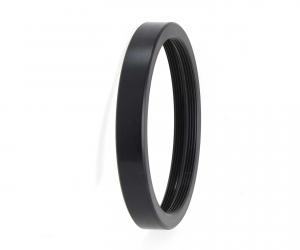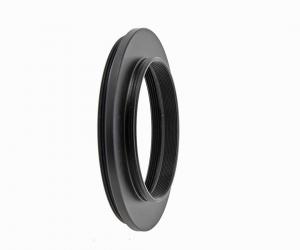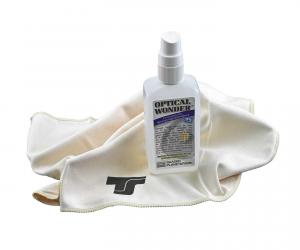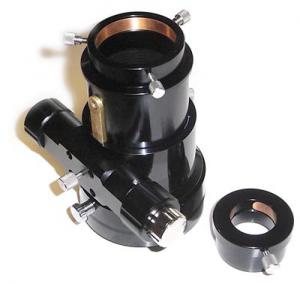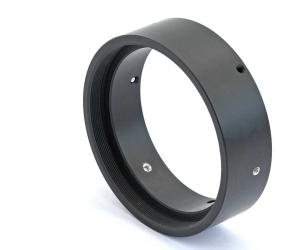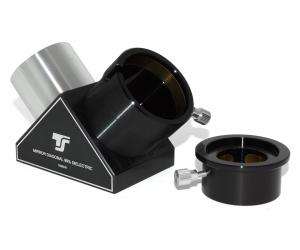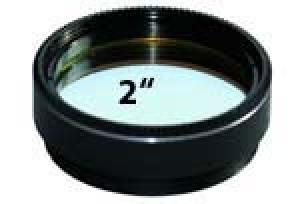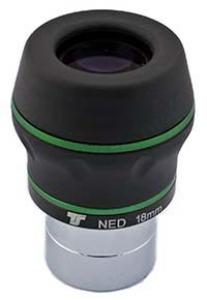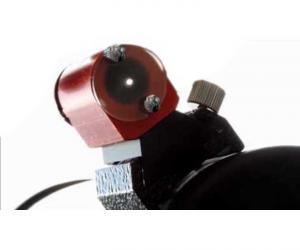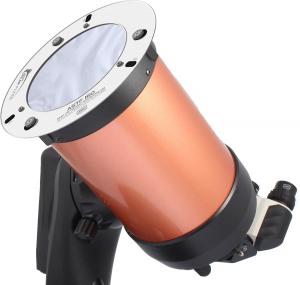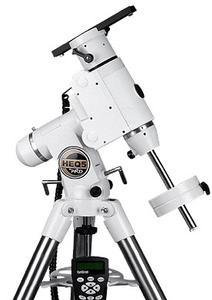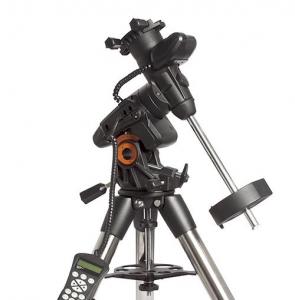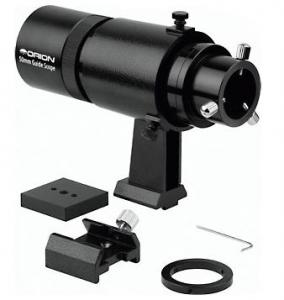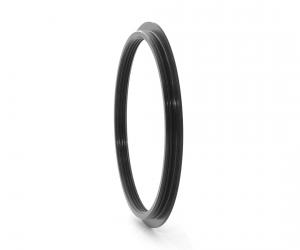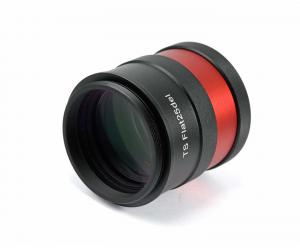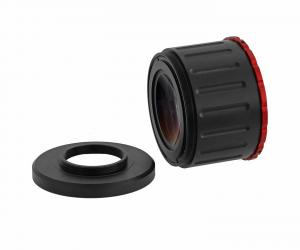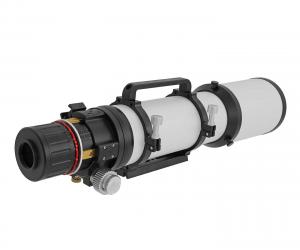- Telescopes
- Overview:
Telescopes - Achromatic Refractor
- Apochromatic Refractor
- Overview:
Apochromatic Refractor - ED Refractor - less color aberration than an achromatic
- SD APO - color free 2-element APO objective
- EDT APO - 3 element ED objective
- High End APO with 3-element APO objective - no color aberation
- Flatfield APO with flat field for Astrophotography
- All Apos and EDs from all manufacturers - large overview
- TS APO and ED from Japan with high quality optics
- Overview:
- Newtonian Telescopes
- Dobsonian Telescopes
- RC Ritchey Chretien Telescopes
- Casssegrain Telescopes
- Reflektor Telescopce with Lens Correcture
- Maksutov Cassegrain Telescopes
- GoTo Telescopes
- Solar Telescopes H-Alpha
- Overview:
- Mounts Tripods Rings Rails Power Supply ...
- Overview:
Mounts Tripods Rings Rails Power Supply ... - Mounts Equatorial with GoTo
- Mounts Equatorial without GoTo
- Mounts Azimutal with GoTo
- Mounts Azimutal without GoTo
- Mounts GoTo - Harmonic Drive
- Travel mounts for astro imaging
- Tripods Piers Polar Wedges
- Mount Control & Electronics
- Dovetail Clamps, Plates and Mount Adapters
- Tube Rings
- Power Supply
- Counterweights Balance Weights
- Mount Accessories - Other
- Overview:
- Telescope Accessories
- Overview:
Telescope Accessories - Eyepieces
- Barlows & Reducer Lenses
- Diagonal Mirrors and Prisms
- Binocular Viewers
- Finder Scopes
- Telescope Collimation and Test
- Cleaning Tools
- Transport and Storage
- Dust protection for Telescopes & Accessories
- Stray Light Protection
- Dewcaps and Heater
- Focusers, Adapters, Motorfocus
- Telescope DIY & Improvement
- Other telescope accessories
- Replacement Parts
- Overview:
- Filters
- Overview:
Filters - Color Filters and Color Filtersets
- Nebular Filters for Visual Observing
- Neutral-Density and Polfilter
- Photo Narrowband Nebular Filters
- Photo Broadband Filters
- Photo Planetary Filters
- Photo R-G-B and IR Cut Filters
- Photo - Filtersets
- Photometric Filters
- Clip Filter for DSLR Cameras
- Filter Wheels and Filterslider
- Solar Filters for white light
- Solarfilter for H-Alpha and Calcium
- Overview:
- Adaptors
- Overview:
Adaptors - Adapter 1,25" and 24,5mm
- Adapter 2"
- Adapter T2 - M42x0.75
- Adapter M48x0,75
- Adapter M54
- Adapter SC
- Adapter M63
- Adapter M68
- Adapter to other Threads
- Adapter Extensions
- Adapter camera bayonet
- Adapter Objective Filterthread
- Adapter Quick Changing , Rotation
- Adapter Eyepiece Projection
- Adapters Tilting
- Overview:
- Astrophotography and Photography
- Overview:
Astrophotography and Photography - Cooled Cameras
- Cameras without Cooling
- Deep-Sky Cameras uncooled
- Set-Offers Camera, Filter, Wheels
- Acessories for Cameras
- Travel mounts for astro imaging
- Imaging Correctors for Telescopes
- Autoguiding Cameras & Sets
- Everything for Guiding
- Focusing aids - Bahtinov mascs
- Flat Field foils and boxes
- Lenses for Cameras
- Piggyback Camera Holder
- Camera Bags, Photocases & more
- Digital Camera and Smartphone Adapter
- Other photo accessories
- Overview:
- Binoculars, Spotting Scopes, Microscopes, Range Finders
- Overview:
Binoculars, Spotting Scopes, Microscopes, Range Finders - Spotting Scopes and Acessories
- Roof Prism Binoculars
- Binoculars with Porro prisms
- Binoculars from 100mm Aperture
- Binoculars with 1,25 inch eyepieces
- TSMX APO Binoculars
- Binoculars for Astronomy
- Binoculars Hiking Bird watching
- Monoculars - Opera Binoculars
- Accessories for Binoculars
- Range Finders
- Microscopy
- Bags for Phototripods & Binoculars
- Overview:
- Phototripods and Binomounts
- Books, Software
- Overview:
Books, Software - Books for Astronomy Beginners
- Star Charts and Planispheres
- Books about our Solar System
- Observing Tips for Amateurs
- Popular Astronomy Literature
- Teaching material
- Astrophotography books
- Telescopes, Observatories, Construction
- Calendars Yearbooks
- Software, Star Charts
- Books for Microscopers
- Books Nature and Animals
- Nature Photography TimeLapse
- Overview:
- Night Vision, Magnifiers, Weather, Domes & more
- Beginner Astronomy and Gift Ideas
- Second Hand & Special Offers
- New products
Manufacturer: -TS Teleskope
Product number: TSAPO106
EUR1899.00new
EUR 1.899,00RRP EUR 2.199,00you save 13.6% (EUR 300,00)
incl. 19 % VAT (DE)
The VAT indicated refers to that applicable in Germany. After logging in, the VAT amount is adjusted to the applicable VAT of the stored delivery country. Therefore, the final price may vary accordingly.
excl. 13.95 € shipping costs (DE)
more details to the shipping costs ...Please log in to calculate shipping costs to your country.
There are no reviews for this product
- Details..
- Technical data..
- In the box..
- Reviews..
- Manufacturer infos..
- Safety informations..
TS PHOTOLINE 106 mm Triplett Apo
The Photoline apochromat with the color-pure premium triplet objective from Hoya (Japan) is the optimal solution for astrophotography and for observation. The lens with cell was manufactured in Japan. Due to the triplet lens, the apo convinces with strong contrast and a high-contrast image up to the highest magnification range. The apo is also designed for astrophotographers who value an optically and technically sophisticated solution. A 0.75x image field corrector was developed especially for this apo.Astrophotographic results obtained with this telescope on Astrobin
Here you can find some astrophotographs made with this telescope model: Link to AstrobinThe optics achieves imaging at a high level
The apo shows you lunar craters or planets without chromatic aberration with a contrast that only a refractor is capable of. But also bright stars are imaged without disturbing color fringes. The reason is the high quality triplet objective with the special glass FCD100 from Hoya in Japan. This glass corresponds in the correction to the well-known FPL53.The air-spaced triplet objective is mounted in a stable, temperature-compensated cell. The complete cell can be adjusted with tension and compression screws. So collimation is not done by lateral pressure on the lenses and is therefore much more accurate and better for the image.
Astrophotography with the TSAP106:
The 3-element 0.75x image field corrector for sharp stars to the edge has been developed especially for this telescope. The corrector is linked in the accessories section. It is screwed to the focuser via the M63x1 thread. Especially for the corrector, Teleskop-Service has put a lot of emphasis on a very good solution.TSFlat25del 1.0x image field corrector: If you want to use the full 700 mm focal length of the apo, you can work with this corrector. However, 2x # TSVM6315 (M63 extension) must be attached between the corrector and the flattener, this will move the flattener 30 mm away from the extension. Then you also come into focus.
3.5" hybrid focuser for maximum load
To allow you to connect heavy accessories to the focuser, the focuser is equipped with a special bearing. It doesn´t just have ball bearings pressing against the draw tube, which give way under higher loads. A rail is attached to the draw tube, which is perfectly supported by adjustable ball bearings. This means that no tilting can be observed, even with heavy accessories weighing up to 10 kg.The drive itself is decoupled and is achieved by means of a helical gear. This guarantees fine and even adjustment even with heavy accessories. 1:10 dual speed allows for even more precise focusing. Fixation of the focus position is achieved by locking the adjustment wheel. No screw presses on the draw tube.
In addition to the 2" and the 1.25" receptacle for visual observation, the focuser also offers the M63x1 female thread and the M78x1 female thread for screwed adaptations.
360° rotation for the right camera position
The focuser itself is fixed to the tube. But many astrophotographers prefer a 360° rotation of the camera for the right image orientation. We offer a solution. You need 2 items for this:This results in a precise 360° rotation with only 21.9 mm overall length. The rotator is screwed between the focuser and the corrector. Of course, you can focus without any problems.
More information on Hoya´s FCD100 APO element:
FCD100 is an ultra-low dispersion optical glass equivalent to fluorite (CaF2). With this glass, in combination with high refractive index optical glasses, excellent chromatic aberration (color error) correction can be achieved. The difference in dispersion performance to FPL53, for example, is less important than the difference in how well the optics are polished. FCD100 is Hoya´s name for this special glass, just as FPL53 is Ohara´s proprietary name.Technical Information
Teleskop-Service has collected a lot of helpful information about refractors and provided it in English as a PDF file: Refractors| Objective: | 106 mm |
| Focal length: | 700 mm |
| Focal ratio: | f/6.6 |
| Construction type: | Air-spaced triplet lens |
| Special glass: | Hoya FCD100 as APO element |
| Cell: | Temperature compensated cell - adjustable |
| Tube material: | Aluminum CNC machined with internal baffles |
| Tube length: | 640 mm with dew shield extended - 550 mm with dew shield retracted |
| Tube diameter: | 114.5 mm |
| Tube weight: | 6.3 kg incl. rings |
| Tube rings: | CNC with 1/4" female thread - centered |
| Dew shield: | 145 mm diameter with unscrewable cap |
| Focuser: | 3.5" hybrid focuser with rack and pinion adjustment and ball bearings |
| Focuser travel: | 80 mm |
| Connection of the focuser on telescope side: | M109x1 female thread |
| Connection thread on tube: | M114x1 external thread + M110x1 external thread (reduction with approx. 20 mm length) |
| Connections on eyepiece side: | M78x1 and M63x1 female thread as well as 2" and 1.25 |
| Working distance: | 192 mm from the 2" receptacle |
Astrophotographic results obtained with this telescope on Astrobin
Here you can find some astrophotographs made with this telescope model: Link to Astrobin| Manufacturer / Importeur: | Teleskop-Service Ransburg GmbH |
| Street: | Von-Myra-Str. 8 |
| ZIP / City: | 85599 Parsdorf |
| Country: | germany |
| Telefon number: | +49 89 99228750 |
| Email: | info@teleskop-service.de |
| Website: | www.teleskop-express.de |
Safety informations: PDF Download
Recommended accessories
Adaptors
TS-Optics adapter to M68 female thread for focusers with male M74 thread
EUR 48,00RRP EUR 64,00you save 25% (EUR 16,00)
TS-Optics Adapter from M63x1 to M48x0.75 with 2" Filter Thread at the Telescope Side
EUR 44,90RRP EUR 59,00you save 23.9% (EUR 14,10)
TS-Optics 360° Rotation & Thread Adapter - M63 to M68, M54 and 2"
EUR 89,00RRP EUR 119,00you save 25.2% (EUR 30,00)
Cleaning & Collimating
Customers who bought this product also bought...
Diagonal Mirrors & Prisms
TS-Optics 2" Star Diagonal with 99% Reflection - 1/12 lambda
EUR 159,00RRP EUR 199,00you save 20.1% (EUR 40,00)
Eyepiece-side accessories like Filters
TS-Optics 1.25" Grey Filter ND 09 - 13% Transmission - Neutral Density
EUR 19,90RRP EUR 24,90you save 20.1% (EUR 5,00)
Eyepieces
TS-Optics PARACOR 35 mm 2" UFL Eyepiece - 69° Field of View - 6 Element Design
EUR 139,00RRP EUR 199,00you save 30.2% (EUR 60,00)
TS-Optics 1.25" ED eyepiece 15 mm - 60° flat field, long eye relief
EUR 84,00RRP EUR 109,90you save 23.6% (EUR 25,90)
TS-Optics 1.25" ED eyepiece 5 mm - 60° flat field, long eye relief
EUR 84,00RRP EUR 109,90you save 23.6% (EUR 25,90)
TS-Optics 1.25" ED eyepiece 12 mm - 60° flat field, long eye relief
EUR 84,00RRP EUR 109,00you save 22.9% (EUR 25,00)
TS-Optics 1.25" ED eyepiece 25 mm - 60° flat field, long eye relief
EUR 84,00RRP EUR 109,90you save 23.6% (EUR 25,90)
TS-Optics 1.25" ED eyepiece 18 mm - 60° flat field, long eye relief
EUR 84,00RRP EUR 109,90you save 23.6% (EUR 25,90)
TS-Optics 1.25" ED eyepiece 8 mm - 60° flat field, long eye relief
EUR 84,00RRP EUR 109,90you save 23.6% (EUR 25,90)
TS-Optics 1.25" ED eyepiece 3.2 mm - 60° flat field, long eye relief
EUR 84,00RRP EUR 109,90you save 23.6% (EUR 25,90)
Finder & Accessories
TS-Optics 8x50 Finder - straight view, white colour and with adjustable bracket
EUR 69,00RRP EUR 89,00you save 22.5% (EUR 20,00)
TS-Optics 8x50 Finder - with Bracket - white colour - 90° angled - erect image
EUR 98,00RRP EUR 109,00you save 10.1% (EUR 11,00)
Special Offer: TS-Optics SkyfinderV LED Red Dot Finder - completely of metal
EUR 49,90RRP EUR 69,00you save 27.7% (EUR 19,10)
General Accessories
ZWO EAF focus motor with USB-C connection for power supply and data transfer
EUR 239,00RRP EUR 257,00you save 7% (EUR 18,00)
Mounts
Celestron AVX GoTo Mount for Astronomy and Astrophotography
EUR 1.249,00RRP EUR 1.495,00you save 16.5% (EUR 246,00)
Photo Acessories
TS-Optics 50 mm Guiding Scope and Finder Scope with 1.25" Receptacle
EUR 94,90RRP EUR 109,00you save 12.9% (EUR 14,10)
TS-Optics Bahtinov Mask for Astrophotography - D= 125 mm to 180 mm
EUR 20,90RRP EUR 33,00you save 36.7% (EUR 12,10)
TS-Optics Guiding Set 50 mm Mini Guide Scope and ASI120MM Mini guiding camera
EUR 299,00RRP EUR 339,00you save 11.8% (EUR 40,00)
TS-Optics 60mm Finder & Guide Scope with ED Objective and T2 Connection
EUR 259,90RRP EUR 279,00you save 6.8% (EUR 19,10)
TS-Optics 360° Rotation Adapter - M63x1 male Thread - M68x1 female Thread
EUR 39,90RRP EUR 69,90you save 42.9% (EUR 30,00)
TS-Optics 0.75x REFRACTOR Reducer Corrector for TS 106 mm f/6.6 Apo
EUR 349,00RRP EUR 400,00you save 12.8% (EUR 51,00)
Similar Products
Transport & Covers
TS-Optics Padded Transport Bag with internal Divider - length 1000 mm
EUR 74,90RRP EUR 104,00you save 28% (EUR 29,10)
TS-Optics Padded Transport Bag with flexible internal Dividers - Length 800 Millimeteres
EUR 77,00RRP EUR 94,00you save 18.1% (EUR 17,00)
Reviews












